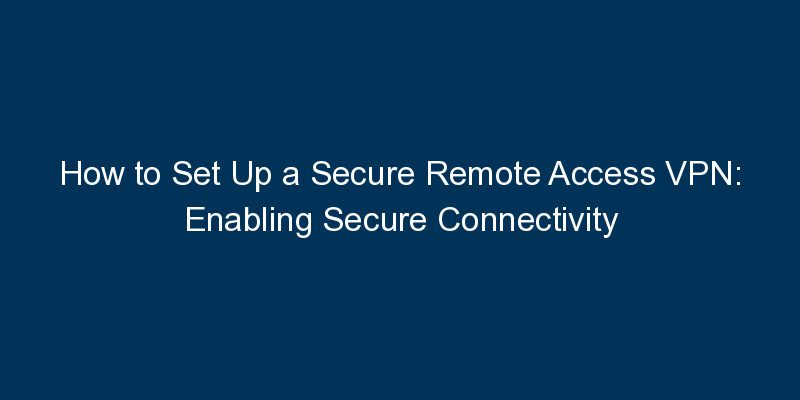Setting up a secure remote access Virtual Private Network (VPN) is crucial for organizations to provide secure connectivity for remote workers. This blog provides a comprehensive guide on how to set up a secure remote access VPN, ensuring that remote employees can access corporate resources securely.
Introduction:
With the rise of remote work, establishing a secure remote access VPN is essential for safeguarding data and ensuring secure communication between remote employees and corporate networks. This guide explores the key steps in setting up a secure remote access VPN.
Key Steps to Set Up a Secure Remote Access VPN:
- Assess Remote Access Requirements: Understand the remote access requirements of the organization. Identify the number of remote users, the types of devices used, and the applications or resources they need to access remotely.
- Select VPN Technology: Choose a suitable VPN technology based on the organization’s requirements. Options include SSL VPNs, IPsec VPNs, and hybrid solutions. Consider factors such as security, scalability, and ease of use.
- Implement Multi-Factor Authentication (MFA): Enhance security by implementing multi-factor authentication for remote access. MFA adds an extra layer of protection by requiring users to provide multiple forms of identification before accessing the VPN.
- Encrypt Data Transmission: Ensure that data transmitted between remote devices and the corporate network is encrypted. Implement robust encryption protocols such as AES (Advanced Encryption Standard) to protect sensitive information from interception.
- Regularly Update VPN Software: Keep VPN software and firmware up to date to address security vulnerabilities and ensure that the latest security features are in place. Regular updates are crucial for maintaining a secure remote access environment.
- Monitor and Audit VPN Access: Implement monitoring and auditing mechanisms to track VPN access and detect any unusual or suspicious activities. Regularly review logs and conduct security audits to identify potential security issues.
Conclusion:
Setting up a secure remote access VPN is essential for enabling secure connectivity for remote workers. By following the steps outlined in this guide, organizations can establish a robust and secure remote access infrastructure, ensuring that remote employees can work securely and access corporate resources without compromising data integrity.






















Comments